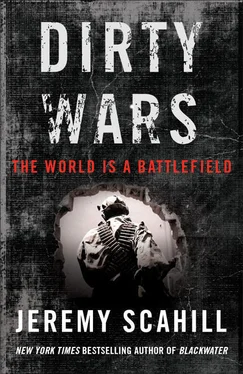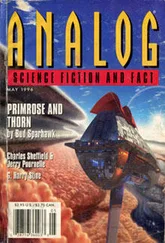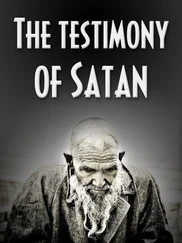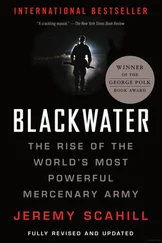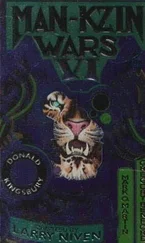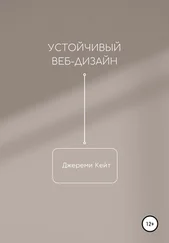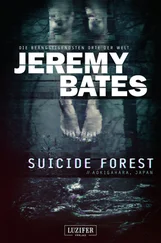Although Zarqawi’s reference to the torture at Abu Ghraib was self-serving, it resonated with Iraqis who had lived to tell the tale of their ordeals there and other prisons or “filtration sites.” There was no doubt that such acts were fueling the insurgency. In fact, Malcolm Nance, the former SERE instructor who worked in Iraq during this period, told me he saw direct evidence that the way the United States treated prisoners and housed them helped extremist groups recruit new operatives. The prisons, he said, became “the Jihadi Advanced University for Suicide Bomber Studies,” explaining that “you put all the worst of the worst together with guys who would never consider being a jihadi, and suddenly you have guys who were released and now they’re suicide bomber fodder.”
Berg’s killing by Zarqawi provided the Bush administration with a convenient opportunity to pivot from its claims that “regime dead-enders” were driving the violence in Iraq and shift the emphasis to al Qaeda terrorists. The US focus on Zarqawi, in turn, brought him notoriety and recognition, and he began raising new funds for his previously obscure network. Much of his money poured in from wealthy Saudis, Syrians and Jordanians. Although the Jordanian terrorist had already been on JSOC’s radar for some time, Zarqawi became a propaganda bonanza for the Bush administration because it could now characterize the resistance in Iraq as being led by al Qaeda. “The execution of Nicholas Berg instantly catapulted Zarqawi into the media spotlight,” recalled Richard Rowley, an independent journalist who spent extensive time in Iraq during that period, including in Zarqawi strongholds. He said:
The United States was eager to publicly portray the insurgency as led by foreign extremists, and made Zarqawi Iraq’s most wanted insurgent. They put a $20 million bounty on his head and retroactively identified him as the mastermind behind virtually every major terrorist attack in Iraq. The hunt for Zarqawi replaced the hunt for Saddam Hussein as a central public goal of the US campaign. The American attention was useful to Zarqawi, who quickly rose to prominence within the insurgency, and Zarqawi’s prominence was useful to the Americans, who would use it to justify their bloodiest military operation of the war.
That operation would come in November 2004 with the second US siege of Fallujah, which had become a potent symbol of resistance to the US occupation. After that, a bloody civil war would break out in Iraq. Zarqawi would announce a war against Shiites, while the United States, in turn, would build up its own Shiite death squads.
At the center of the US contribution to Iraq’s civil war were two Americans. One was General David Petraeus, who had close ties to the White House, particularly to Dick Cheney, and had been tapped by Rumsfeld in June 2004 to head the Multi-National Security Transition Command–Iraq. The other was retired US colonel James Steele, a former Enron executive who had been selected for a senior Iraq job by Wolfowitz.
Although Enron had been a major backer of the Bush campaign, Steele wasn’t in Iraq because of his Enron days. He had a deep history with US “dirty wars” in Central America. As a colonel in the marines in the mid-1980s, Steele had been a key “counterinsurgency” official in the bloody US-fueled war in El Salvador, where he coordinated the US Military Advisory Group, supervising Washington’s military assistance and training of Salvadoran Army units battling the leftist Farabundo Martí National Liberation Front guerrillas. In the late 1980s, Steele was called to testify during the Iran-Contra investigation about his role in Oliver North’s covert weapons pipeline, which ran through the Salvadoran air force base at Ilopango, to the Nicaraguan Contra death squads.
Steele and Petraeus were central to a program known as the “Salvadorization of Iraq,” or simply the “Salvador Option.” The two men built up local Iraqi Special Ops units to be used in a counterinsurgency campaign, but they would soon turn into unaccountable death squads. “We will hit these people and teach them a good lesson they won’t forget,” Iraqi defense minister Hazim Shaalan said the day the first six-hundred-man battalion of Iraqi Special Operations forces was to put into action in June 2004. “Americans and allied forces have certain restrictions we won’t have. It’s our country, it’s our culture, and we have different laws than you do.” Enraged by another suicide bombing days later, Hazim declared, “We will cut off their hands and behead them.”
On his own, Steele helped hatch a Special Police Commando Unit (also known as the Wolf Brigade), made up of former Republican Guard and Saddam-era SOFs recruited by the Ministry of Interior. According to a New York Times Magazine piece by Peter Maass from 2005, Petraeus didn’t know about the unit right away; he found out about it, visited its base in the Green Zone, challenged the commandos to one of his famous push-up contests, and that was that. “He was not just embracing a new military formation; he was embracing a new strategy,” Maass reported. “The hard men of the past would help shape the country’s future. Petraeus decided that the commandos would receive whatever arms, ammunition and supplies they required,” and he gave Steele his full support. After Ayad Allawi, the Sunni interim prime minister, lost the election in January 2005, the Wolf Brigade was taken over by Shiite militia members who then became the beneficiaries of Petraeus’s support. It was the moment Iraq descended into unspeakable violence.
MCCHRYSTAL’S COMMAND CENTER at Balad was now up and running at a decent speed. “Vital months had been lost while the Pentagon leadership was in denial about the insurgency. By early 2004, it was mutating and McChrystal was one of the few who both understood this and the need to get on top of it,” reported Mark Urban, the journalist who embedded with British commandos working with McChrystal. “Teams from each of the different intelligence agencies were established at Balad. Once he had started to milk them for information, McChrystal put it all into a JSOC intranet similar to the one he’d created in Afghanistan. It would allow those at the cutting edge of the US counterterrorism effort to share information worldwide.” Urban added: “McChrystal’s counterterrorist Rome could not be built in a day. It would take much of 2004 to take shape.”
With Saddam Hussein in prison and the High Value Task Force killing its way through Iraq, McChrystal and McRaven began refocusing the HVT efforts on Afghanistan and the hunt for Osama bin Laden. “If anyone is smart and cunning enough to get [bin Laden], McRaven and the Delta and SEAL Team Six guys he now commands will do it,” General Downing said in 2004. Downing’s remark about McRaven and Team 6 hitting bin Laden was prophetic, but he would not live to see it fulfilled—Downing passed away in 2007. Iraq was becoming engulfed in the flames of multiple insurgencies that were largely fueled by the US invasion and occupation, the abuse and torture of prisoners and the widely held perception among large swaths of the Iraqi population that the United States was a “gratuitous enemy.” Zarqawi and his network grew stronger and made what was once a lie about an al Qaeda presence in Iraq a bloody reality. McChrystal would spend a great deal of time trying to find, fix and ultimately finish Zarqawi. But Afghanistan and Pakistan were also calling.

16. “The Best Technology, the Best Weapons, the Best People—and Plenty of Money to Burn”
AFGHANISTAN, IRAQ AND PAKISTAN, 2003–2006—AS in Iraq, JSOC ran its own detainee operations in Afghanistan and would maintain a list of people it wanted to kill or capture. Known as the Joint Prioritized Effects List (JPEL), it began with the leaders of the Taliban and al Qaeda, but would, in the ensuing years, grow to more than 2,000 people as the insurgency in Afghanistan widened. Just as JSOC found itself being ordered to kill its way through a constantly regenerating and growing list of “insurgents” in Iraq, it would eventually face a guerrilla war in which America’s mightiest warriors would be fighting Afghans who previously had no serious connection to al Qaeda or the Taliban.
Читать дальше
